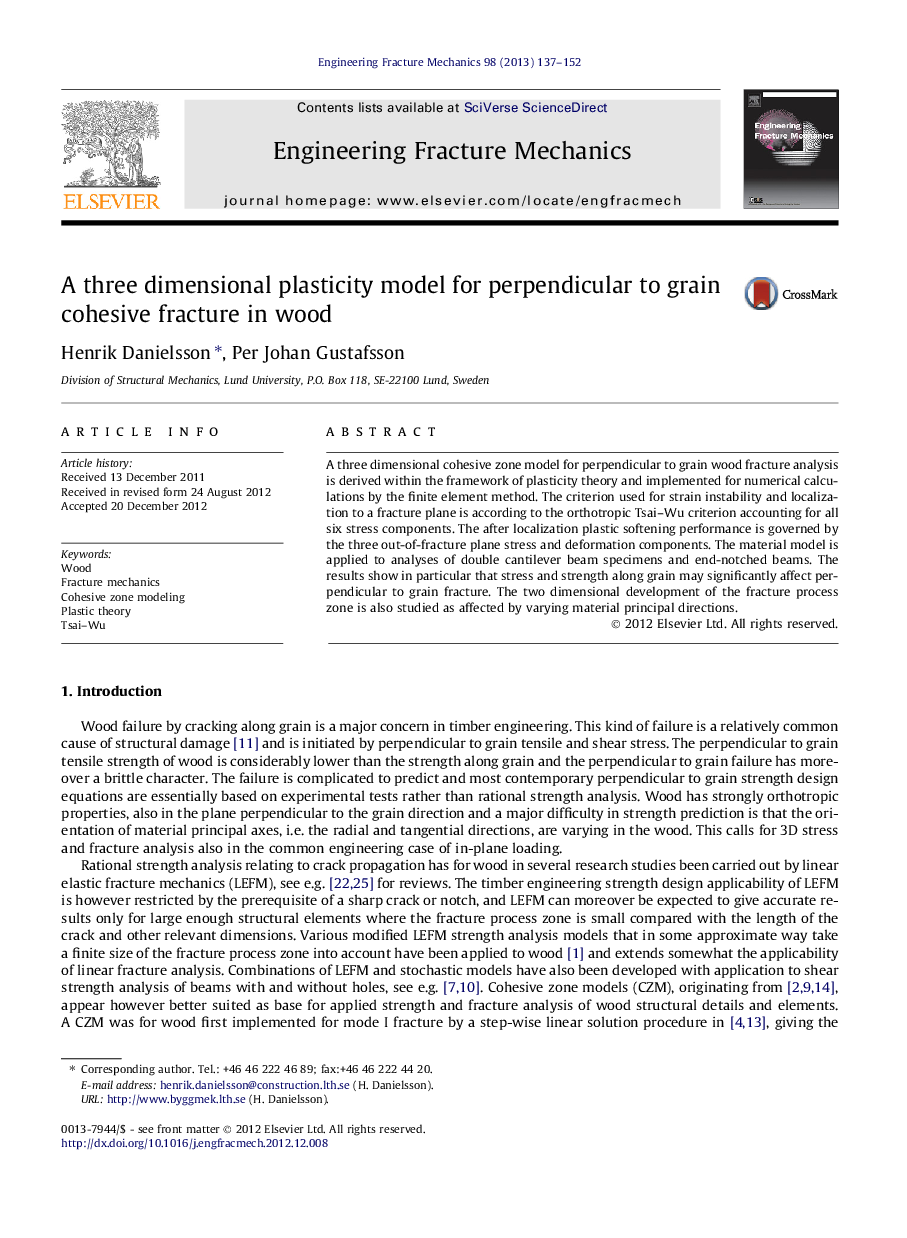| Article ID | Journal | Published Year | Pages | File Type |
|---|---|---|---|---|
| 770657 | Engineering Fracture Mechanics | 2013 | 16 Pages |
A three dimensional cohesive zone model for perpendicular to grain wood fracture analysis is derived within the framework of plasticity theory and implemented for numerical calculations by the finite element method. The criterion used for strain instability and localization to a fracture plane is according to the orthotropic Tsai–Wu criterion accounting for all six stress components. The after localization plastic softening performance is governed by the three out-of-fracture plane stress and deformation components. The material model is applied to analyses of double cantilever beam specimens and end-notched beams. The results show in particular that stress and strength along grain may significantly affect perpendicular to grain fracture. The two dimensional development of the fracture process zone is also studied as affected by varying material principal directions.
► A 3D cohesive zone model for wood based on plastic theory is derived and implemented. ► The model uses the Tsai–Wu criterion for initiation of softening. ► Varying the material principal directions affects global strength to some extent. ► Varying the material principal directions affects extension of the fracture process zone.
